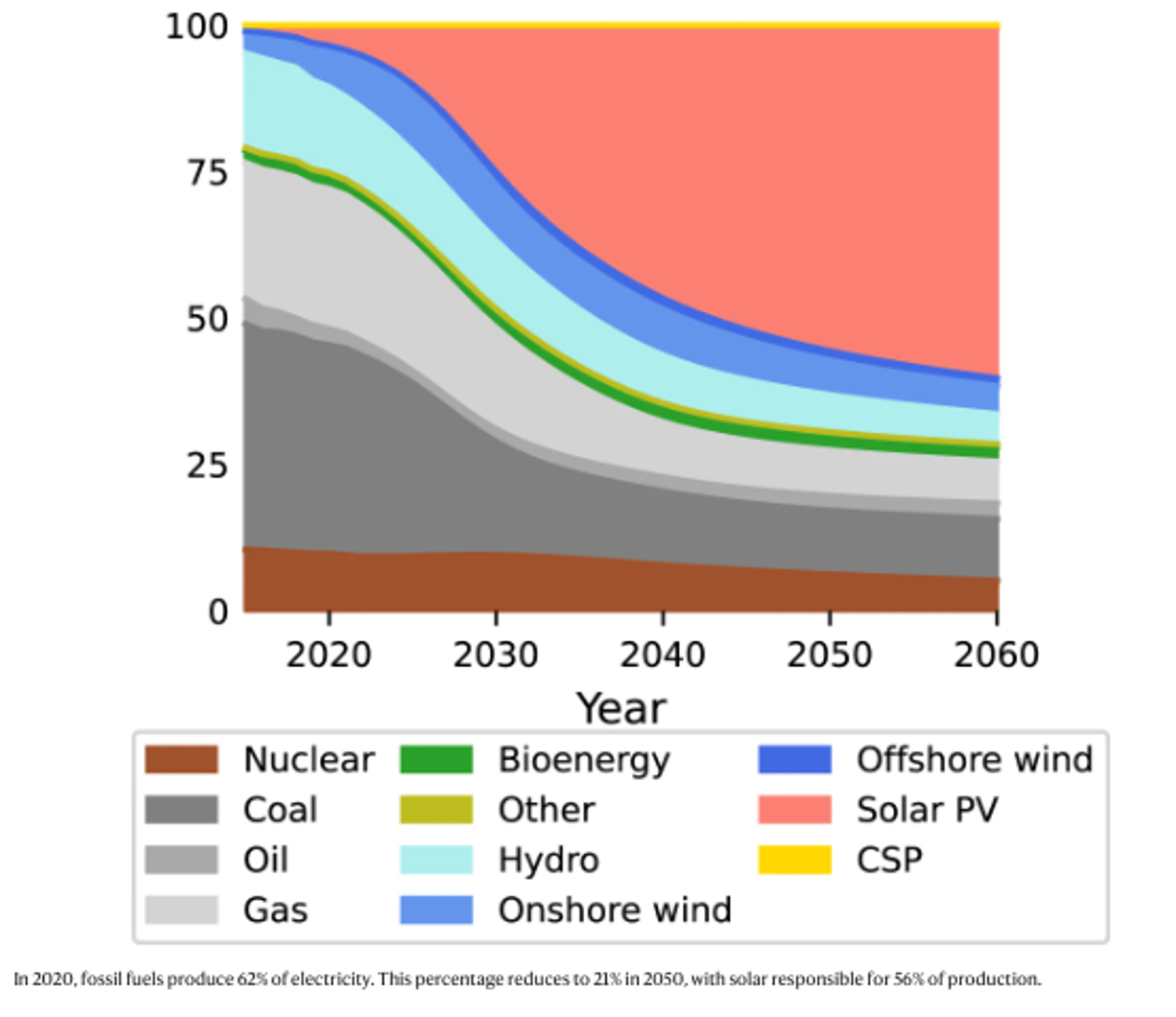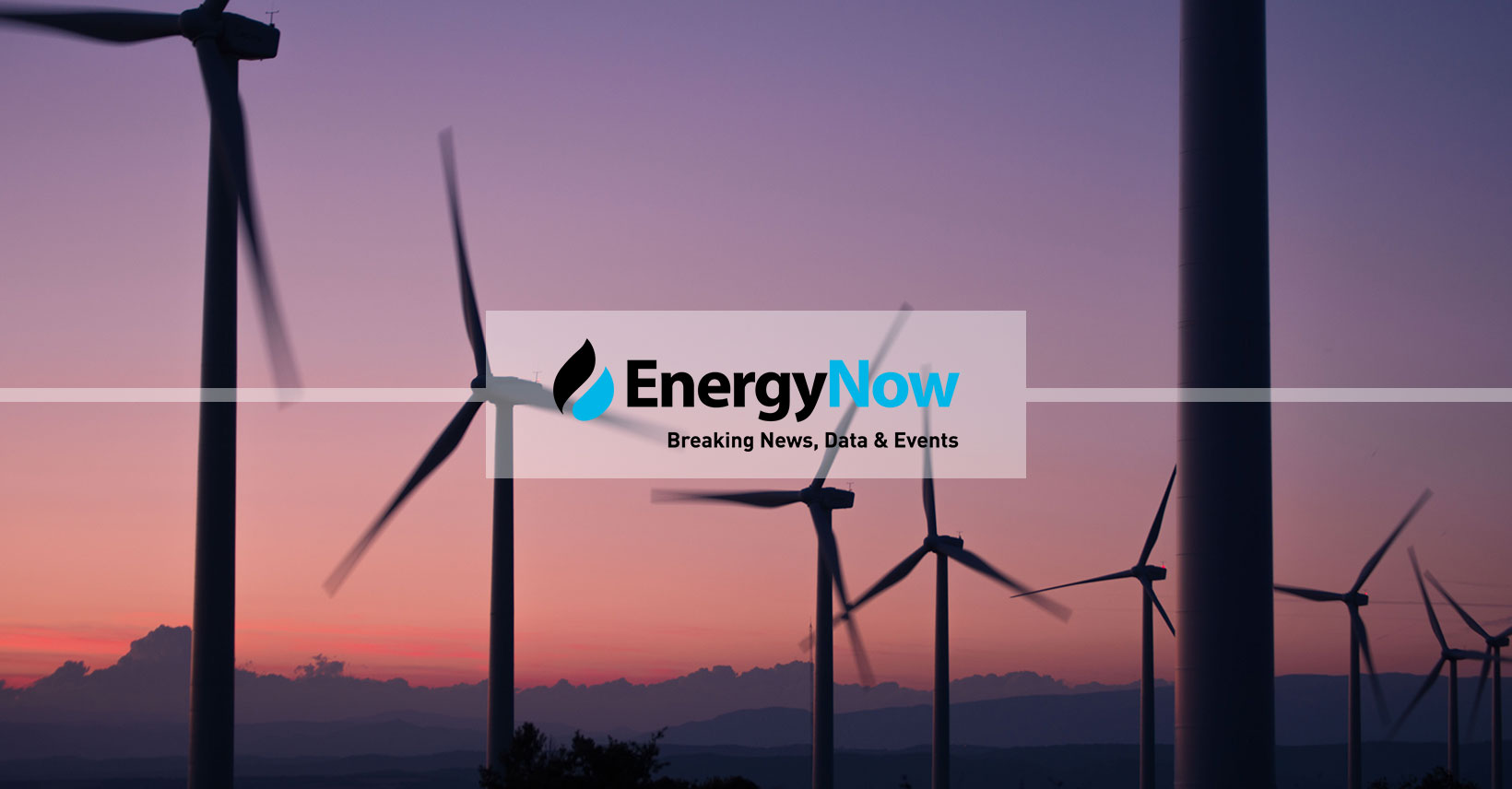Sign up for daily news updates from CleanTechnica on email. Or follow us on Google News!
Electricity powers the world. It lights our homes, runs our factories, and soon will be the energy source of choice for our transportation needs. It can be generated by burning fossil fuels, by wind turbines, or solar panels. Using the energy of the sun to create electricity is completely logical. Sunlight is free, and the cost of solar power has dropped dramatically over the past two decades. All we need to do is harvest it, distribute it, and store it for those times when the sun is not shining and humanity can enjoy electricity that is almost too cheap to meter until the sun implodes in about 2 billion years.
The Solar Power Tipping Point
Researchers in Europe published a new study in the journal Nature Communications on October 17, 2023, that comes to a rather extraordinary conclusion. They found, much to their surprise, the solar power tipping point is not still in the future. In fact, it has already occurred. The upshot of their findings is that the move to solar power is now irreversible.
The researchers are from a diverse group of institutions including the Global Systems Institute at the University of Exeter, the Center for Energy, Environment and Natural Resource Governance at the University of Cambridge, the World Bank, the Institute for Sustainable Resources at University College London, the Climate Action Center at the Royal Institute of Technology in Stockholm, Cambridge Econometrics in Cambridge, UK.
Stripped of its technical jargon, the report suggests that prior studies of future energy generation over-emphasized the role of fossil fuels and under-emphasized the role of renewables, particularly solar. “Without any further energy policy changes, solar energy appears to follow a robust trajectory to become the future dominant power source before mid-century,” the researchers said.
“Due to the reinforcing co-evolution of technology costs and deployment, our analysis establishes quantitative empirical evidence, from current and historical data trends, that a solar energy tipping point is likely to have passed (emphasis added). Once the combined cost of solar and storage crosses cost parity with all alternative technologies in several key markets, its widespread deployment and further costs declines globally could become irreversible. This echoes the results from Rupert Way et al., who showed that such a configuration would be cheaper than alternatives.
“A tipping point towards solar dominance however does not solve climate change mitigation or achieve climate targets, as it does not ensure a zero-carbon energy system. Solar-dominated electricity systems could become locked into configurations that are neither resilient nor sustainable with a reliance on fossil fuel for dispatchable power.
“Issues that could hinder achieving zero-carbon energy systems include grid stability issues, the availability of financial capital and critical minerals, and the willingness of decision-makers to get onboard a rapid transition that could generate substantial distributional issues in their respective regions. The energy crisis resulting from the war in Ukraine suggests that the accelerated move away from fossil fuels is needed even more urgently.
“We conclude that achieving zero-carbon power systems likely requires policies of a different kind than have traditionally been discussed by the energy modelling community. The carbon price required to achieve cost break-even between renewables and fossil fuels may soon be zero. Instead, it is policies that address the above barriers — grid resilience, access to finance, management of material supply chains, and political opposition — that may enable success in reaching net-zero energy emissions.
“These projections and sensitivities give us some confidence to suggest that realistic energy model baselines should, from now on, include substantially larger shares of solar energy than what is commonly assumed, as they make coal and gas-dominated baseline scenarios largely unrealistic. The main scenario framework assessed in the IPCC reports, the socialeconomic pathways (SSPs), include scenarios with increasing reliance on coal to the energy mix. This work notably indicates these scenarios are highly improbable (emphasis added).”
A Surprising Result
“Historical policy to stimulate solar PV has brought down costs. We’re now at the point that a virtuous cycle between cost declines and additional deployment doesn’t require more ambitious policies targeting solar anymore,” lead author Femke Nijsse of the University of Exeter told Anthropocene. “More ambitious policies for other renewables [are] still needed.”
Over the last decade and a half, the cost of solar panels and wind power have plummeted. Researchers had begun to talk about a ‘tipping point’ where renewables might out-compete fossil fuel sources of energy based on cost alone, but there was little agreement on when or how this might occur. As a result, models of the global energy system have generally assumed that fossil fuel dominance would continue. Past models have also consistently underestimated how fast solar power would grow in the real world.
Instead, Nijsse and her colleagues analyzed the global energy system using a set of three models that incorporate that virtuous cycle between expansion of green technologies and falling costs. The models use real-world technological and economic data to forecast the roll-out of various energy technologies through the year 2060. “We were seeking to find which policy was required to ‘tip’ this tipping point. We found it had already tipped, assuming a set of four barriers can be overcome or avoided.”
Four Barriers To Solar
The four barriers to solar’s takeover are unstable power grids, lack of financing for solar in developing countries, supply chain capacity, and political resistance from regions that lose jobs. Policies that address these barriers may be more effective in bringing about the clean energy transition than efforts to bring down the price of solar such as by carbon taxes, the researchers said.
1. To achieve resilient electric grids that can accommodate daily, seasonal, and weather related variations in the amount of solar available, policymakers can add other renewables, power transmission links between regions, batteries and other forms of energy storage, and policies to manage demand for power. Otherwise, the world could get locked into an energy system that relies on fossil fuels to meet peaks in energy demand.
2. New policies are also needed to extend financing for solar deployment to developing countries. Currently, solar finance is concentrated in high-income countries, and even international development aid for this purpose is concentrated in middle income countries. Low income countries, especially in Africa, are left out. As a result, it’s not certain that falling costs alone will enable the developing world to decarbonize.
3. Electrification and batteries require large amounts of certain minerals and metals, like copper, nickel, cobalt, lithium, and rare earth elements, and the supply chains for these are sometimes weak. Research is needed to find alternatives, and policies to maximize recycling and reuse of materials will also be important.
4. Finally, political opposition from fossil fuel interests and communities that depend on fossil fuel employment could put a damper on solar deployment. Making sure fossil fuel-dependent communities are taken care of in the green transition could help prevent some of this pushback.
A Cascade Of Tipping Points
Nijsse and her colleagues are now on the hunt for tipping points elsewhere in the global energy system, especially related to home heating and electric vehicles. “What we want to study in much more detail is the interactions between sectors, and how that impacts the first barrier we identify, which is grid stability),” she says. “Can we use surplus solar energy to pre-heat hot water or houses? Can we use EV car batteries for grid storage? If so, can we create cascades of tipping points?”
The key, as always, is cost. The lowest cost energy will win, assuming no distortions of the marketplace by political actors. Social justice will also be a key consideration. Worldwide, about 12 million people are employed by traditional energy companies. Their social and economic needs must be met in order for the renewable energy revolution to move forward. Fortunately, many of the skills needed in the energy sector today will be fully transferable to renewable energy tomorrow.
Have a tip for CleanTechnica? Want to advertise? Want to suggest a guest for our CleanTech Talk podcast? Contact us here.
EV Obsession Daily!
I don’t like paywalls. You don’t like paywalls. Who likes paywalls? Here at CleanTechnica, we implemented a limited paywall for a while, but it always felt wrong — and it was always tough to decide what we should put behind there. In theory, your most exclusive and best content goes behind a paywall. But then fewer people read it!! So, we’ve decided to completely nix paywalls here at CleanTechnica. But…
Thank you!
Community Solar Benefits & Growth
CleanTechnica uses affiliate links. See our policy here.





